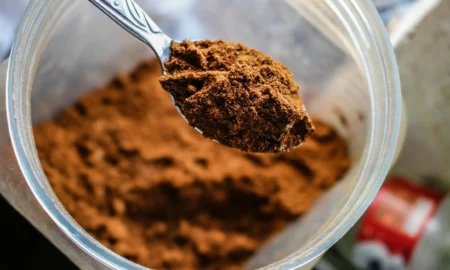 When I first began training more than four decades ago, I followed exercise routines published in the magazines to the letter. I recall using the current Mr. America’s workout routines each year, feeling that if it worked for him, it would work for me. My adolescent mind hadn’t yet grasped the notion of individual genetic responses to exercise, nor had I any concept of overtraining. One routine that I used featured 70 sets for chest alone, and the total workout required five to six hours of daily training. The only reason I likely survived was my age—14. It seems silly now, but many young people still follow often poorly designed workout programs they see in magazines. These days, of course, the men featured are often taking anabolic drugs, which dramatically increase exercise recovery ability. Those who attempt to duplicate their routines without pharmacological assistance are doomed to failure.
When I first began training more than four decades ago, I followed exercise routines published in the magazines to the letter. I recall using the current Mr. America’s workout routines each year, feeling that if it worked for him, it would work for me. My adolescent mind hadn’t yet grasped the notion of individual genetic responses to exercise, nor had I any concept of overtraining. One routine that I used featured 70 sets for chest alone, and the total workout required five to six hours of daily training. The only reason I likely survived was my age—14. It seems silly now, but many young people still follow often poorly designed workout programs they see in magazines. These days, of course, the men featured are often taking anabolic drugs, which dramatically increase exercise recovery ability. Those who attempt to duplicate their routines without pharmacological assistance are doomed to failure.
I see routines in the magazines and online that are simply disastrous. They will definitely produce results—but not the kind that the users of such wacky programs are seeking.
One article suggested that you train arms six days a week. Such training is guaranteed to lead to muscle catabolism, reflected by a loss of size and strength. Writers of such drivel are living in their own world, and it’s significant that they never show the gains they or their clients made on such “super” routines.
A recent rat study clearly illustrates what happens when you get a bit overenthusiastic about your training. The authors note that muscle gains result when exercise activates certain hormonal and signaling factors in muscle. If all goes well, muscle protein synthesis is increased, leading to muscle gains. The initial recovery of trained muscle also has an inflammatory component, however, and while inflammation is initially necessary to clear out muscle debris and so on, it can be counterproductive if it persists for an extended time. Indeed, a major component of the loss of muscle with age is out-of-control inflammation, setting the stage for catabolic processes that lead to a loss of muscular size and strength.
In the study, the rats did a compressed form of overtraining, termed “stacked” exercise by the authors. Specifically, the rats did four bouts of 3×10 reps of squatting exercise, separated by three hours of recovery. That resulted in an acute suppression of insulinlike growth factor 1 release in muscle and also suppressed muscle protein synthesis factors. Locally produced IGF-1 in muscle as a result of training is required for muscle repair and regeneration. It activates special muscle stem cells called satellite cells. Adequate muscle glycogen, or carbohydrate stored in muscle, is also needed to fuel muscle recovery, but the amount of exercise also suppresses muscle glycogen. The lack of muscle glycogen then switches on a protein called AMPK, which lets the muscle use alternative fuels, such as fat. But a side effect of AMPK is suppressed muscle protein synthesis. The authors note that excessive exercise suppresses gene expression and reduces the force of anabolic factors in muscle.
While all that is going on, muscle inflammation increases, fostered by the excessive exercise. That tips the balance toward catabolism, leading to no gains or even a loss of muscle. The inflammatory cytokines that rise in muscle after intense training, such as tissue necrosis factor-A, block anabolism in muscle and promote catabolic pathways. The authors note, “These results indicate that adequate recovery between resistance bouts is important for reducing inflammatory signaling and subsequent protein degradation in muscle.” They add that those effects impair anabolic processes in muscle for up to 48 hours after training.
The lesson is that more is definitely not better. Steer clear of those self-styled Internet experts who recommend “high volume, high frequency” overload training to make spectacular gains. For maximal training progress, allow enough time for complete recovery between workouts. In simple terms, rest at least 48 to 72 hours before training the same muscle group again to give the inflammation a chance to recede. IM




















You must be logged in to post a comment Login